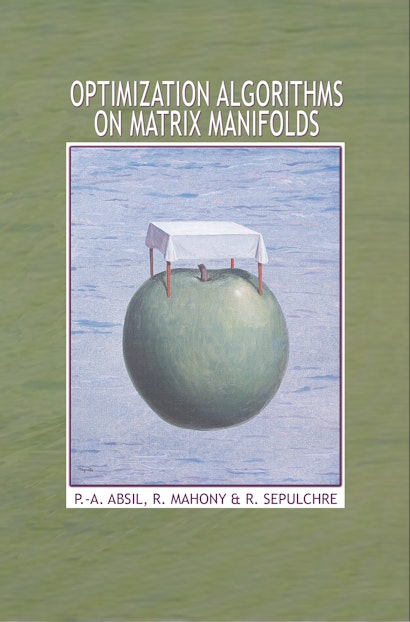Many problems in the sciences and engineering can be rephrased as optimization problems on matrix search spaces endowed with a so-called manifold structure. This book shows how to exploit the special structure of such problems to develop efficient numerical algorithms. It places careful emphasis on both the numerical formulation of the algorithm and its differential geometric abstraction—illustrating how good algorithms draw equally from the insights of differential geometry, optimization, and numerical analysis. Two more theoretical chapters provide readers with the background in differential geometry necessary to algorithmic development. In the other chapters, several well-known optimization methods such as steepest descent and conjugate gradients are generalized to abstract manifolds. The book provides a generic development of each of these methods, building upon the material of the geometric chapters. It then guides readers through the calculations that turn these geometrically formulated methods into concrete numerical algorithms. The state-of-the-art algorithms given as examples are competitive with the best existing algorithms for a selection of eigenspace problems in numerical linear algebra.
Optimization Algorithms on Matrix Manifolds offers techniques with broad applications in linear algebra, signal processing, data mining, computer vision, and statistical analysis. It can serve as a graduate-level textbook and will be of interest to applied mathematicians, engineers, and computer scientists.
P.-A. Absil is associate professor of mathematical engineering at the Université Catholique de Louvain in Belgium. R. Mahony is reader in engineering at the Australian National University. R. Sepulchre is professor of electrical engineering and computer science at the University of Liège in Belgium.
"This book is succinct but essentially self-contained; it includes an appendix with background material as well as an extensive bibliography. The algorithmic techniques developed may be useful anytime a model leads to a mathematical optimization problem where the domain naturally is a manifold, particularly if the manifold is a matrix manifold. The book follows the usual definition-theorem-proof style but it is not intended for traditional course work so there are no exercises. A reader with limited exposure to manifold theory and differential geometry most likely will benefit from consulting standard texts on those subjects first."—Anders Linner, Mathematical Reviews
"[T]his book is succinct but essentially self-contained; it includes an appendix with background material as well as an extensive bibliography. The algorithmic techniques developed may be useful anytime a model leads to a mathematical optimization problem where the domain naturally is a manifold, particularly if the manifold is a matrix manifold. The book follows the usual definition-theorem-proof style but it is not intended for traditional course work so there are no exercises. A reader with limited exposure to manifold theory and differential geometry most likely will benefit from consulting standard texts on those subjects first."—Anders Linnér, American Mathematical Society
"The book is very well and carefully written. Every chapter starts with a page-long introduction clearly outlining its goals and how they are achieved together with possible relations to other chapters. I find the material very well explained and supported with appropriate examples. It is a pleasure to work with such a book."—Nickolay T. Trendafilov, Foundations of Computational Mathematics
"The treatment strikes an appropriate balance between mathematical, numerical, and algorithmic points of view. The quality of the writing is quite high and very readable. The topic is very timely and is certainly of interest to myself and my students."—Kyle A. Gallivan, Florida State University

